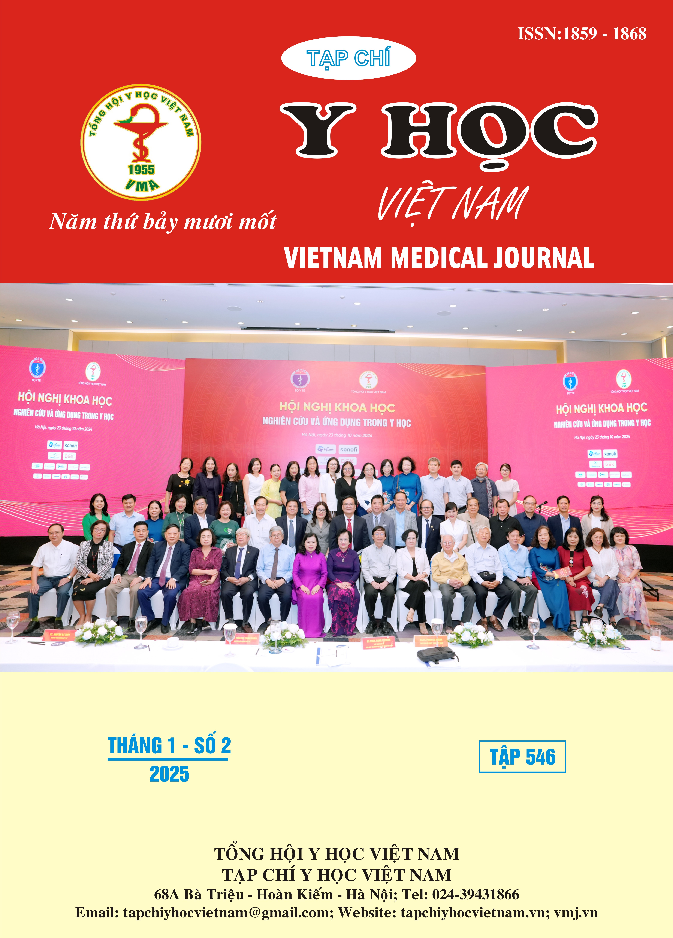SỰ TƯƠNG QUAN GIỮA VI MẠCH MÁU QUANH GAI THỊ VÀ TỔN THƯƠNG THỊ TRƯỜNG Ở BỆNH NHÂN GLAUCOMA GÓC MỞ NGUYÊN PHÁT GIAI ĐOẠN TRUNG BÌNH VÀ NẶNG
Nội dung chính của bài viết
Tóm tắt
Mục tiêu: Đánh giá mối liên hệ giữa các chỉ số mật độ mạch máu quanh gai thị và thị trường ngưỡng 24-2 ở bệnh nhân Glaucoma góc mở nguyên phát (POAG) giai đoạn trung bình và nặng. Đối tượng – Phương pháp nghiên cứu: Nghiên cứu quan sát, cắt ngang mô tả có phân tích, khảo sát trên 74 mắt của 53 bệnh nhân được chẩn đoán POAG giai đoạn trung bình và giai đoạn nặng tại bệnh viện Mắt Thành phố Hồ Chí Minh từ ngày 01/10/2023 đến ngày 01/10/2024. Các mắt được khảo sát được chia thành 2 nhóm: POAG giai đoạn trung bình (32 mắt) và giai đoạn nặng (32 mắt), dựa trên chỉ số bảng phân độ Hodapp-Parish-Anderson. Tại thời điểm đến khám hoặc nhập viện, bệnh nhân được khảo sát các chỉ số Mật độ mạch máu quanh gai thị (VD) bằng OCTA, Độ dày lớp sợi thần kinh võng mạc (RNFL) và Độ dày phức hợp tế bào hạch (GCC) bằng OCT, Độ lệch trung bình (MD), Độ nhạy trung bình (MS), Độ lệch vùng chuẩn (PSD) trên thị trường Humphrey ngưỡng 24-2. Sự tương quan giữa các chỉ số cấu trúc và mạch máu với các chỉ số trên thị trường được đánh giá bằng phương pháp hồi quy Pearson. Kết quả: Các bệnh nhân có tuổi trung bình là 54.88 ± 15.32 và MD trung bình là -16.32 ± 8.57 dB. VD quanh gai thị trung bình của mẫu nghiên cứu, nhóm POAG trung bình và nhóm POAG nặng lần lượt là là 40.93 ± 3.70%, 43.11 ± 3.27 và 38.75 ± 2.71%. Giữa 2 nhóm POAG trung bình và nặng, có sự khác biệt có ý nghĩa thống kê ở tất cả các chỉ số mạch máu và cấu trúc đo được bằng OCT và OCTA (p < 0.05). Trong số các chỉ số, VD phía trên, VD quanh gai thị và RNFL phía trên là những chỉ số có sự tương quan mạnh mẽ nhất với MD (r lần lượt là 0.728, 0.669, 0.664 và p < 0.001). Kết luận: Ở các mắt POAG trung bình và nặng, có sự tương quan tốt giữa mật độ mạch máu quanh gai thị toàn phần và từng vùng với tổn thương thị trường, đặc biệt là góc phần tư phía trên. Nhìn chung, VD có sự tương quan với các chỉ số của thị trường tốt hơn độ dày RNFL và GCC.
Chi tiết bài viết
Từ khóa
Thị trường ngưỡng 24-2, OCT, OCTA, mật độ mạch máu quanh gai thị, độ lệch trung bình, độ nhạy trung bình, độ dày RNFL, độ dày GCC.
Tài liệu tham khảo
2. Eslami Yadollah (2022), "The role of optical coherence tomography angiography in moderate and advanced primary open‑angle glaucoma", Int Ophthalmol.
3. Kastner Alan (2019), "Advanced glaucoma at diagnosis: current perspectives", Eye (2020.
4. Kong A. W., Turner M. L., Saifee M., et al. (2022), "A Global and Sector-Based Comparison of OCT Angiography and Visual Field Defects in Glaucoma", J Ophthalmol, 2022, 6182592.
5. Leske M. C., Heijl A., Hyman L., et al. (1999), "Early Manifest Glaucoma Trial: design and baseline data", Ophthalmology, 106 (11), 2144-53.
6. Moghimi S., Bowd C., Zangwill L. M., et al. (2019), "Measurement Floors and Dynamic Ranges of OCT and OCT Angiography in Glaucoma", Ophthalmology, 126 (7), 980-988.
7. Moghimi Sasan (2019), "Optical Coherence Tomography Angiography and Glaucoma: A Brief Review", Asia Pac J Ophthalmol.
8. Mwanza J. C., Budenz D. L., Warren J. L., et al. (2015), "Retinal nerve fibre layer thickness floor and corresponding functional loss in glaucoma", Br J Ophthalmol, 99 (6), 732-7.


